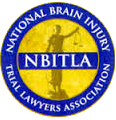What Happens If Another Party Denies Liability for Your Injury?
It is common for the other person involved in your accident to deny – or fail to admit – liability for your injuries. Insurance companies and lawyers warn their clients not to admit any fault while at the scene of an accident. This is a common tactic, therefore, seen during personal injury claims. As the insurance investigation continues, however, denial of liability could get in the way of your financial recovery. Knowing how to handle a liability dispute can help you obtain fair compensation for your injuries in California.
Further Investigation of the Accident
First, investigators will take a deeper look into the cause of the accident. Insurance companies may send their own investigators and insurance adjusters to inspect evidence such as property damage and the scene of the accident. The accident and/or police report could also help investigators piece together what happened, as could evidence such as photographs from the scene and eyewitness statements.
An investigation may find proof of the other party’s negligence, proof of the plaintiff’s negligence and/or proof of a third party’s negligence. It is wise as an injured party to hire a personal injury attorney to investigate the accident on your behalf. You can trust a lawyer to have your best interest in mind. The resources of a law firm, including connections to investigators and accident reconstructionists, may be able to help you prove the other party’s liability.
If enough evidence to prove the other party’s fault for your accident and injury surfaces during an investigation, you may be able to settle your claim here. The insurance company will conclude its investigation, agree that its policyholder is liable, and offer an amount to settle and resolve your claim. If, however, investigations result in an unclear picture of who is to blame, the defendant may continue to deny liability and make it more difficult to complete your claim. In this situation, your case may have to proceed to trial in California.
Evidence Submitted By Both Sides of the Claim
You or your personal injury lawyer can argue a dispute of liability assertion by asking a claims adjuster to explain why it believes its insured is not liable. The insurance company must provide a valid reason for denying your claim, such as a state statute or regulation that applies to the case. Even if the insurer does have appropriate documentation supporting its denial, your attorney can help you present evidence from a different perspective to fight back. The police report or insurance company’s investigation may not paint the whole picture. Your lawyer can help you prove your version of events.
During pre-trial negotiations or a personal injury lawsuit, both sides of the case will have the chance to present evidence to the courts. A judge or jury will analyze each piece of submitted evidence and decide which party is more than 50% responsible for the accident. If the defendant is found any amount at fault, he or she will owe at least some compensation to the plaintiff. The strength of your evidence against the other party can be critical in whether you win or lose your case, as well as how much money you receive. Having an attorney represent you during your claim can greatly improve the odds of success.
Allocation of Fault to Both Parties
California is a pure comparative negligence state. The state allows an injured party to continue collecting damages even with more than 50% of fault for an accident. This law may apply to a case in which another party denies liability for your injury. Even if a defendant succeeds in proving that you were also to blame for your injury, you could still recover a partial compensatory award. The courts will reduce your recovery by an amount that matches your portion of fault. A personal injury lawyer can help you refute a comparative fault claim to maximize your financial outcome, even if the defendant is denying liability. Trust a lawyer to handle your case if it involves a liability dispute from the other party.

















